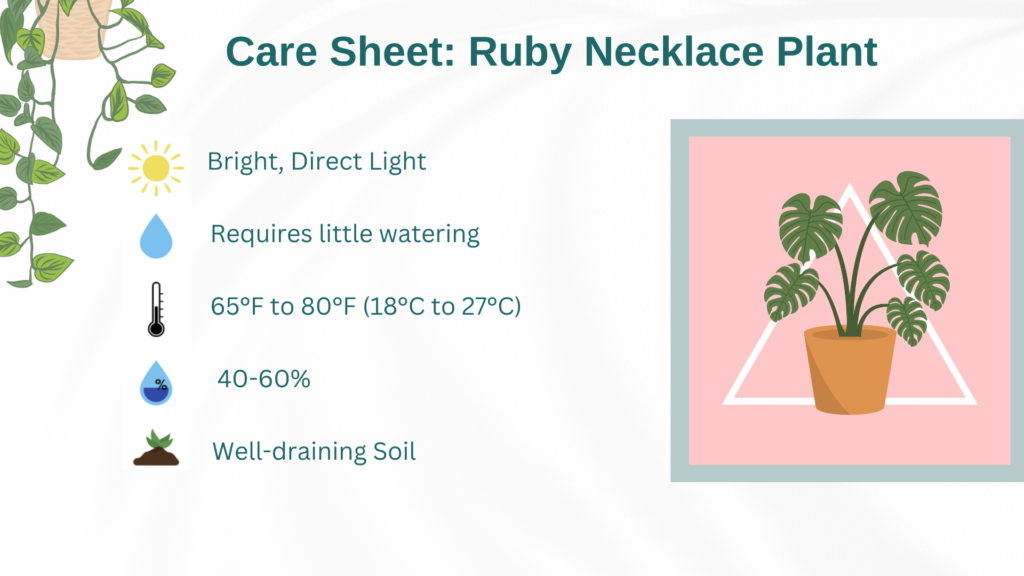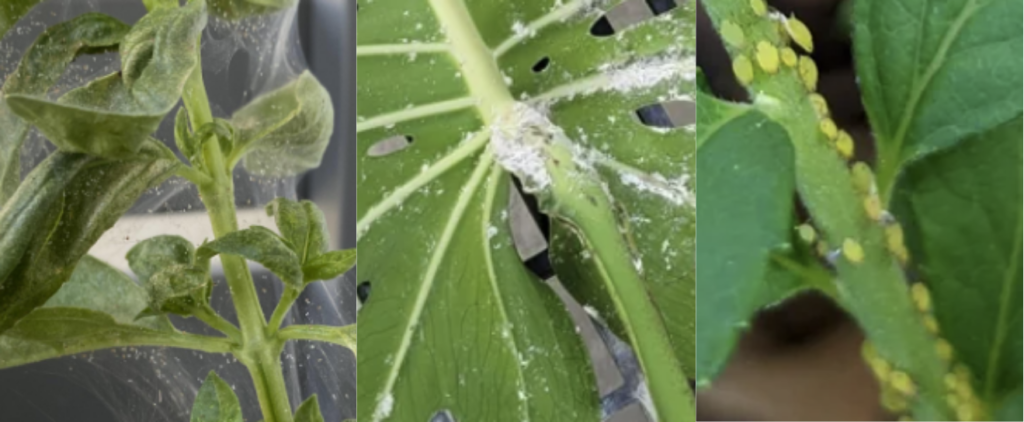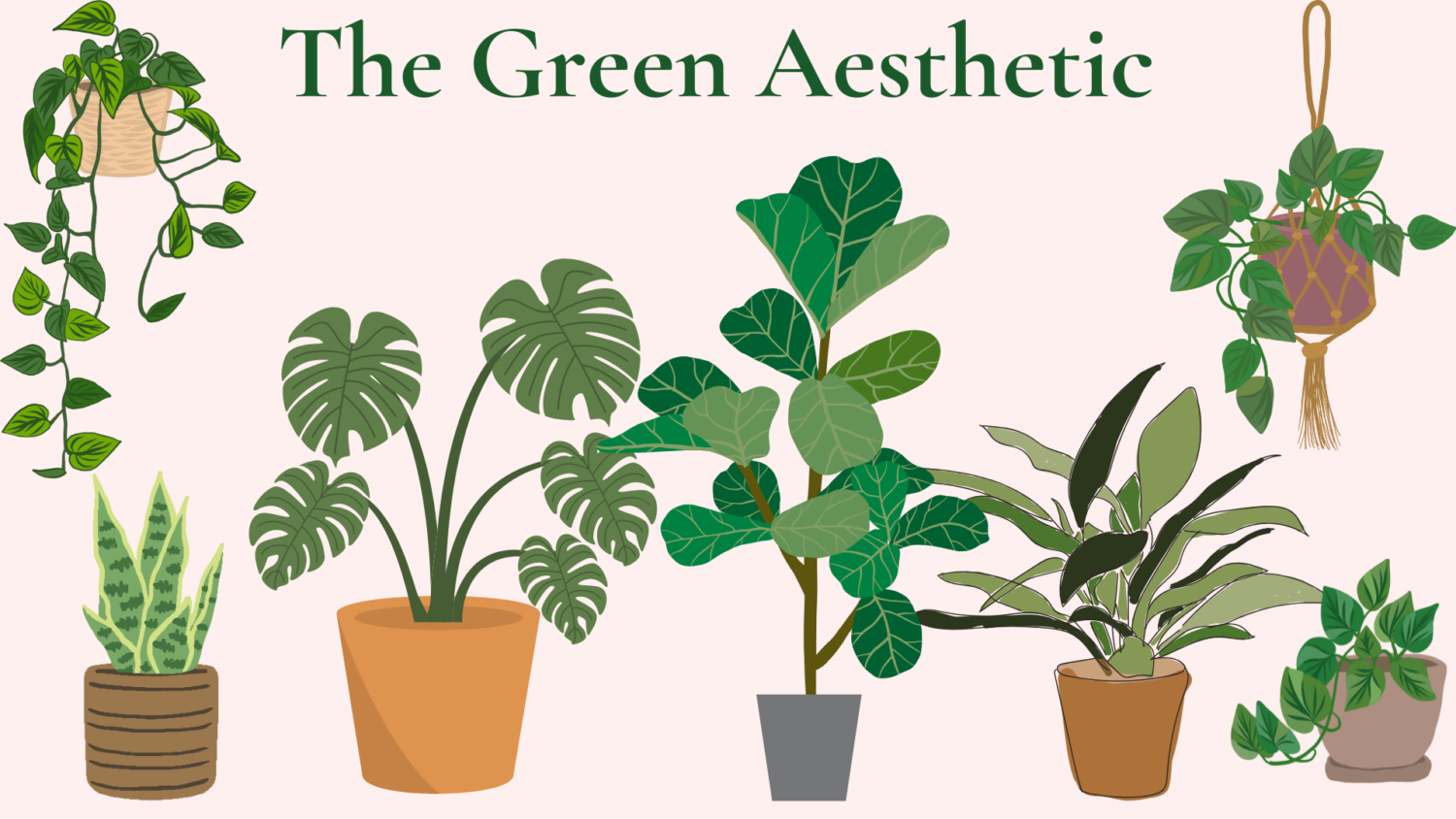The Ruby Necklace Plant (Othonna capensis), also known as “String of Rubies,” is a unique and colorful trailing succulent that’s perfect for brightening up any space.
Its name comes from its vibrant ruby-colored stems that look like strands of jewels when they grow long and drape over the pot.
With its easy going nature and eye-catching color, the Ruby Necklace Plant is a fantastic choice if you’re looking for something different and want a pop of color in your indoor plant collection.
How to Identify a Ruby Necklace Plant
The Ruby Necklace Plant is easy to spot because of its bright purple-red stems and plump, elongated leaves that range from green to purple, depending on the light it receives. When exposed to lots of sunlight, the stems turn a deep ruby color, and the leaves take on shades of purple, adding to its jewel-like appearance. It even produces small, daisy-like yellow flowers in bright light, which add another layer of charm!
Size
When grown indoors, the Ruby Necklace Plant usually reaches 2-4 inches in height but can produce trailing vines up to 2 feet long. This makes it perfect for hanging baskets or for draping over the edge of a shelf.
Care

Light Requirements
The Ruby Necklace Plant thrives in bright, direct sunlight. It needs plenty of light to develop its stunning ruby color and to stay healthy. If you don’t have a spot with bright light, you can still grow it in indirect light, but the stems and leaves will stay more green than red.
Pro Tip: If you want those rich ruby colors, place the plant in a south-facing window or use a grow light to make sure it’s getting enough sunlight.
Watering Needs
Since it’s a succulent, the Ruby Necklace Plant doesn’t need a lot of water and is prone to rot if overwatered. Let the soil dry out completely between waterings.
- In spring and summer: Water once every 1-2 weeks, depending on the humidity in your home.
- In fall and winter: Reduce watering to once a month, as the plant’s growth slows down during this time.
Pro Tip: Check the soil by poking your finger an inch deep. If it feels dry, it’s time to water. Avoid letting water sit in the bottom of the pot.
Temperature and Humidity
Ruby Necklace Plants prefer warm temperatures and can tolerate typical indoor humidity levels. They’re not frost-tolerant, so keep them away from cold drafts.
- Ideal Temperature Range: Between 65°F and 80°F.
- Humidity: Normal indoor humidity works fine, but they do best with low to moderate humidity.
Soil Requirements
The Ruby Necklace Plant needs well-draining soil to prevent root rot. A succulent or cactus soil mix is ideal because it drains quickly. You can also create your own mix by combining regular potting soil with perlite or sand for better drainage.
Fertilizer
Feed your Ruby Necklace Plant with a diluted succulent fertilizer once every 4-6 weeks during spring and summer. Avoid over-fertilizing, as too much fertilizer can cause leggy growth and weak stems. Skip fertilizing during the fall and winter when the plant is in its resting phase.
Potting
Choose a pot with good drainage holes to avoid waterlogging the roots. Terra cotta pots are a good choice because they help the soil dry out faster. Repotting is usually only needed every 2-3 years, or when you see roots poking out of the drainage holes.
Pro Tip: When repotting, only go up one pot size to avoid overwhelming the plant with too much soil.
Pruning
Pruning isn’t necessary for the health of the Ruby Necklace Plant, but you can trim back any overly long stems or damaged leaves to keep it looking neat and tidy. Trimming can also encourage the plant to produce new growth and keep it full.
Propagation
The Ruby Necklace Plant is easy to propagate through stem cuttings.
- Cut a healthy stem with a few leaves.
- Let the cutting dry out for a day or two to form a callus.
- Place it in well-draining soil or directly in water to root.
- Keep it in bright, indirect light and mist occasionally if planting in soil.
Once roots form, you can plant it in its own pot and watch it grow!
Pests
While generally hardy, the Ruby Necklace Plant can sometimes attract common pests like mealybugs, spider mites, and aphids.
- Spider Mites: These tiny pests leave small webs on the plant. Wipe the plant down with a damp cloth and spray with insecticidal soap.
- Mealybugs: These pests look like small, white cotton clumps. Remove them with a cotton swab dipped in rubbing alcohol.
- Aphids: These small green or black bugs usually gather on new growth. You can remove them by spraying the plant with water or using insecticidal soap.
Pro Tip: Regularly check the plant for pests, especially if it’s outdoors for part of the year. Cleaning the leaves gently can help prevent infestations.

Diseases
The most common issue with Ruby Necklace Plants is root rot, which occurs from overwatering or poor drainage. Signs include yellowing leaves, mushy stems, and an unpleasant smell from the soil.
- Root Rot: If you notice symptoms of root rot, take the plant out of the pot, remove any mushy roots, and repot in fresh, well-draining soil. Water less frequently to avoid the issue in the future.
- Powdery Mildew: This fungal disease causes white powdery spots on the leaves. Improve air circulation around the plant and avoid getting the leaves wet when watering.
Is It Toxic?
The Ruby Necklace Plant is non-toxic to pets and humans, making it a safe option if you have curious pets or small children.
Common Issues
Here are some common problems you might face with a Ruby Necklace Plant and how to fix them:
- Yellowing leaves: Usually caused by overwatering. Let the soil dry out completely before watering again.
- Pale or green leaves: This often means the plant isn’t getting enough light. Move it to a brighter spot to encourage the rich ruby color.
- Leggy growth: This can happen when the plant stretches for light. Trim back the stems and place it in a location with more direct sunlight.
Difficulty Level
The Ruby Necklace Plant is generally considered easy to moderate in terms of care. As long as you don’t overwater it and give it plenty of light, it’s a pretty resilient plant that’s perfect for beginners and experienced plant parents alike.
Final Thoughts
The Ruby Necklace Plant is a unique succulent that adds color and personality to any indoor plant collection. With its trailing ruby-red stems and vibrant green or purple leaves, it’s a true showstopper when it gets the light it needs. By providing bright sunlight, careful watering, and well-draining soil, your Ruby Necklace Plant will thrive and add a pop of color to your home. Enjoy caring for this “jewel” of a plant!

